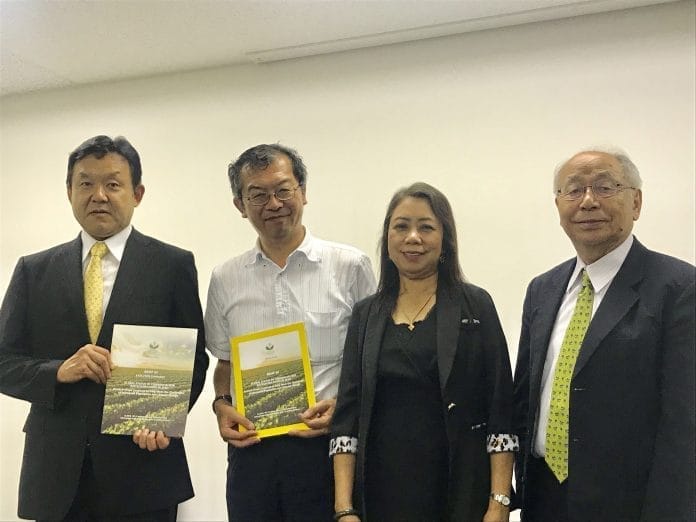
Biotech Crops continue to help meet the challenges of feeding increased global populations and mitigating climate change.
TOKYO, JAPAN: A total of 70 countries adopted biotech crops through cultivation and importation in 2018 – the 23rd year of continuous biotech crop adoption, according to the Global Status of Commercialised Biotech/GM Crops in 2018 (ISAAA Brief 54) released by the International Service for the Acquisition of Agri-biotech Applications (ISAAA) on Aug 22.
Twenty-six countries (21 developing and five industrialised countries) planted 191.7 million hectares of biotech crops, which added 1.9 million hectares to the record of plantings in 2017.
The continuous adoption of biotech crops by farmers worldwide indicate that biotech crops continue to help meet global challenges of hunger, malnutrition, and climate change.
In 2018, it was reported in the United Nation’s State of Food Security and Nutrition in the World that hunger is growing year after year for three consecutive years, and at the levels equivalent to the records a decade ago.
Furthermore, the “2017 Global Report on Food Crises” revealed that hunger and malnutrition continue to rise, with around 108 million individuals in 48 countries at risk or in severe food insecurity. Biotech crops, developed with improved traits such as increased yield, more resistance to pests, improved nutrition, among others, are undeniably necessary to address these global challenges affecting the lives so many families globally.
“GM technology has contributed to all facets of food security. By increasing yields and reducing losses, it contributed to food availability. By enabling farmers to improve their processes and join the modern supply chain, it improved physical access to food.
Through rigorous standards of food safety and hygiene programmes, it contributed to better food utilisation,” said Dr Paul S. Teng, ISAAA Chair of the Board.
“While agricultural biotechnology is not the only key in enhancing global food security, it is an important scientific tool in the multidisciplinary toolkit.” Biotech crop plantings have increased ~113-fold since 1996, with an accumulated area of 2.5 billion hectares, showing that biotechnology is the fastest adopted crop technology in the world.
“In countries with long years of high adoption, particularly the USA, Brazil, Argentina, Canada, and India, adoption rates of major crops are at levels close to 100 per cent, indicating that farmers favor this crop technology over the conventional varieties. More farmers’ and consumers’ needs, more diverse biotech crops with various traits became available in the market in 2018.
These biotech crops include potatoes with non-bruising, nonbrowning, reduced acrylamide and late blight resistant traits; insect resistant and drought tolerant sugarcane; non-browning apples; and high oleic acid canola and safflower.
The ISAAA report also highlighted the following key findings:
• The top 5 countries with the largest area of biotech crops planted (USA, Brazil, Argentina, Canada, and India) collectively occupied 91% of the global biotech crop area.
• Biotech soybeans reached the highest adoption worldwide, covering 50% of the global biotech crop area.
• The area of biotech crops with stacked traits continued to increase and occupied 42% of the global biotech area. Farmers in 10 Latin American countries planted 79.4 million hectares of biotech crops.
• Nine countries in Asia and the Pacific planted 19.13 million hectares of biotech crops. • In Asia, Indonesia planted for the first time a drought tolerant sugarcane developed through a public (University of Jember) and private (Ajinomoto Ltd.) partnership.
• The Kingdom of eSwatini (formerly Swaziland) joined South Africa and Sudan in planting biotech crops in Africa, with the introduction of IR cotton. Nigeria, Ethiopia, Kenya and Malawi granted approvals for planting IR cotton opening Africa to biotech crop adoption.
• In Europe, Spain and Portugal continued to adopt biotech maize to control European corn borer.
• More area planted to biotech crops for farmer and consumer needs include potatoes with non-bruising, non-browning, reduced acrylamide and late blight resistant traits; non-browning apples; insect resistant eggplant; and low lignin alfalfa, among others.
• New crops and trait combinations in farmer fields includeinsect resistant and drought tolerant sugarcane;high oleic acid canola and safflower
• Various food, feed and processing approvals for Golden Rice, Bt rice,herbicide tolerant cotton, low gossypol cotton, among others.
• Cultivation approvals for planting in 2019 include new generation herbicide tolerant cotton and soybean, low gossypol cotton, RR and low lignin alfalfa, omega-3 canola, and IR cowpea, among others.
With the continuously increasing adoption of biotech crops worldwide, the farmers are at the forefront of reaping numerous benefits.
“We were fed up with weeding and spraying pesticides to control bollworms and weeds. When the technology was introduced, we rapidly picked it up,” said Frans Mallela, a farmer from Limpopo Province, South Africa. Le Thanh Hai, one of the early adopters of biotech maize in Vinh Phuc Province, Vietnam, said that biotech maize has helped revive maize farming in their province and stressed that many farmers now grow biotech maize because of its benefits. Rosalie Ellasus, a farmer from Pangasinan, Philippines, said that she adopted Bt maize because she gained more yield with less production cost, compared to conventional maize varieties. “There was not even a trace of pests considering that we did not apply insecticide. Furthermore, we no longer need to visit our maize field everyday and this gives us peace of mind,” Ellasus added.
















